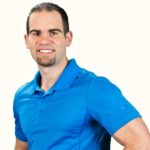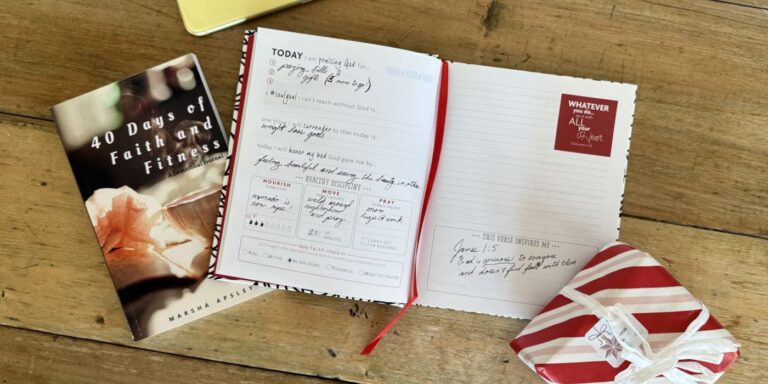
By Eric Rodgers, ACE Certified Trainer, NASM FNS
Family fitness is more than the family going to the gym and then going their separate ways. Exercising TOGETHER enables you to build strength in five shared aspects of fitness. Collaborative family exercise and intergenerational play are ideal ways to integrate faith and fitness into a fantastic lifestyle.
The next time you go to the gym take some time to just walk around the entire facility and observe. It would be cool to see three generations working out together.
But, what you’ll likely see are young guys “pumping iron” in the free-weight room, older men splashing through a water aerobics session, young ladies burning calories in a body-pump-class, older women stretching-it-out in yoga and children playing in the indoor playground. Everyone is in his or her own place. Facilities are usually designed well with distinct spaces for certain activities.
Unfortunately those spaces can become segregated. There may not be a sign posted that says “Men only” or “Restricted to 65 and older” but the separation occurs. When that happens assumptions are reinforced that certain activities are gender-specific or that a space or type of exercises are exclusively for certain ages.
Instead a gym (especially a faith-centered fitness facility) is an ideal place to intentionally bring together the diversity of age groups for the pursuit of stronger relationships. What can we learn from one another within this environment? The answer is a very simple truth.
THE SHARED LEVELS OF PHYSICAL FITNESS
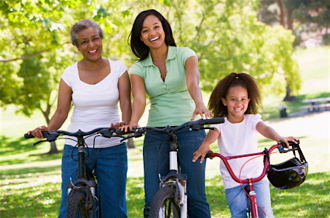
We share common aspects of fitness. The five levels are:
- Flexibility
- Balance
- Core Mobility
- Strength
- Performance
These levels are not based so much on ease or difficulty of the exercises. AND – they certainly aren’t designated to separate different age groups. Instead they provide a basis for full-body movement and overall health FOR EVERYONE, young or old throughout an entire lifetime. For families there are also the stages of family fitness.
Facilities offer more than exercise rooms and a place to “throw iron around”. Wellness clubs and recreation centers give everyone a chance to grow physically and socially together. For example, an 80-year-old individual could learn from a 6-year-old child. Children with their growing bodies are extremely active and flexible. Adults that play and exercise with children will be inspired and compelled to keep moving by these “young bootcamp leaders”. Seniors who do this are known as “Active-Agers” and have discovered the value of keeping fun alive and well.
Similarly, young people can learn from older adults that may have years of training and activity, experience with injury and pain and knowledge from personal research and learning about the importance of taking care of the body. While we all may want the fountain of youth, the closest thing to that is exercise and being socially active.
I have a client, Rudy (68) who recently told me, “I have learned so much about my body during my lifetime; however, I wish I would have implemented balance exercises in my training during my younger years. Working with the youth has taught me more than I could have ever dreamed.” No matter the differences in age (in fact especially because of the age differences), we can all learn from one another.
TIPS FOR EXERCISING TOGETHER AS A FAMILY
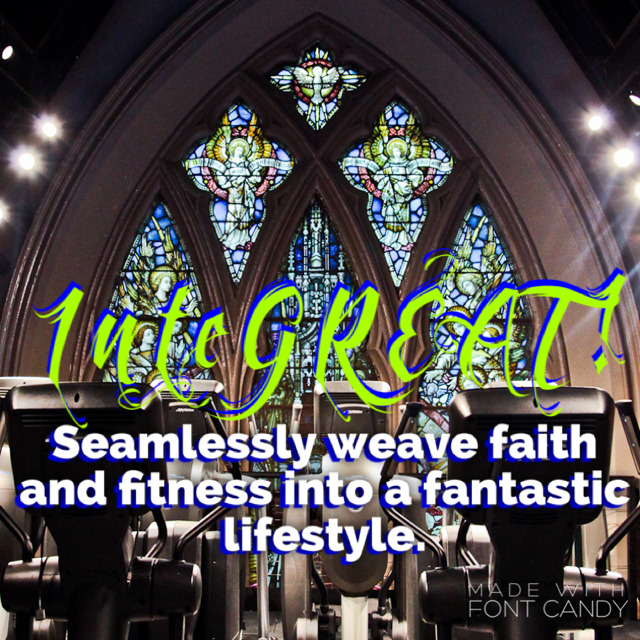
– Frequency – It shouldn’t be ‘always‘ but it can be ‘often‘. Everyone needs to have regular times to exercise and recreate individually but when you’re also intentional about having regular times to get fit and play together you’ll find that commitment adds great value to your life.
– Who is your family? – For many ‘family’ can include grandparents, parents, children, grand-children or other relatives. For others those close family members may not be available. Family can include friends, those you mentor, church members, co-workers, caregivers, volunteers — any combination that come together to nurture, extend love, provide accountability and value commitment.
– Make it a physical AND spiritual workout – It takes effort and determination to get together and be together for exercise and play. So, while you’re at it gain the added benefit of integrating some simple and natural activities that also build your faith like praying together, jointly preparing a meal and eating together, watching a faith-strengthening video together or reading and discussing a Bible selection together.
As we age, we can feel insecure with our decreasing strength – the younger generation seems to benefit more from exercise. At some point or another everyone finds, “I am not as strong as I once was”. With age our bodies change BUT our need for the full range of exercise remains the same. The next time you exercise, do it by connecting with a co-worker, friend or gym member. It could be with someone familiar, but be open to connect with those you don’t even know. Women especially find it helpful finding friends during change. Be intentional to interact with and learn from those who are both younger and older than you. By doing this, your world is opened up to new possibilities and ideas. Key to achieving balance on all levels of exercise is to reach out across the ages to one another.
IDENTIFY THE EXERCISES FOR YOUR AGE GROUP

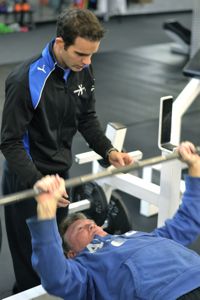 The exercises for your age group are in fact the same exercises for every other age group.
The exercises for your age group are in fact the same exercises for every other age group.
Stretching and Flexibility are exercises used to increase overall functionality of the body in day-to-day tasks. Examples of exercises are calf-stretch, neck stretch, and hamstring stretch to name a few. Benefits while you are younger and as you get older: decreases risk of injury, helps alleviate stress, and improve daily performance.
Core Training is to help strengthen the abdominals and back which help support the spine and pelvis. Core strength training consists of various exercises such as stability ball crunches, plank, and “woodchoppers”. Benefits while you are younger: Improved mobility in functional fitness and sports, increased core strength, and improved posture. Benefits, as you get older: Improved posture, increased mobility for daily tasks, increases range of motion and reduced back pain.
Cardio is a type of exercise used to help promote overall cardiovascular health as well as heart health. Types of cardio are sprints, jogging, and interval training (Low Impact/High intensity). Benefits while you are younger and as you get older: improved heart and lung function, feel better, reduces the risk of heart disease, helps to lower blood pressure, and increase “good” cholesterol.
Strength Training is also known as the “load phase” meaning that you use external forces (dumbbells, barbells, resistance bands, etc) to place emphasis on certain muscle groups being worked. Example of exercises: Barbell Squats for Legs, Alternating Dumbbell Curls for biceps, and Dumbbell Chest Press for chest. Benefits while you are younger: Increased strength gains over non-training peers, enhance skeletal development, and improved body composition. Benefits, as you get older: Sleep improvement, promotes a healthy state of mind, improves heart health and stabilizes blood sugar levels.
THE OTHER MUSCLE TO TRAIN – YOUR MIND
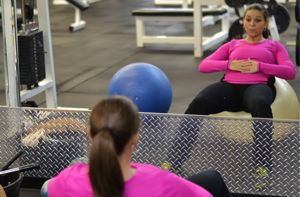 Finding strength among your weakness will help promote personal growth. People create limits and limitations as they get older. Children seem to be without physical limits. Obviously they are not but they help remind us that body strength and wellness is more than physical attributes; it is the power of the mind. Numbers measure age and we are culturally trained to associate ability with those numbers. Training the mind to think past the limits to become limitless leads to physical growth.
Finding strength among your weakness will help promote personal growth. People create limits and limitations as they get older. Children seem to be without physical limits. Obviously they are not but they help remind us that body strength and wellness is more than physical attributes; it is the power of the mind. Numbers measure age and we are culturally trained to associate ability with those numbers. Training the mind to think past the limits to become limitless leads to physical growth.
Mary (65) is one of my training clients that has embraced this perspective. She says,” I love weight training now that I know that I can push beyond my own thoughts. We are only limited by our thoughts. The mind is a powerful tool that must have exercise just as much as muscles”. Once our mind is set to limited, we will be limited beyond measure. Few resources will give you a more limitless view than the Bible. Read it within a cross-generational group and discover the added strength you gain.
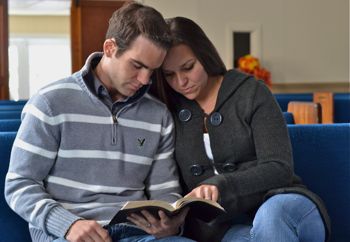 We can learn from age diversity in and outside of the fitness facility. Apply that attitude in all your social environments: at work, school, and your everyday environments and especially at church. Most importantly our culture and every one of us as individuals become stronger when the ages are closely connected and relationship maintained within the family. Personal and physical growth is connected to training the mind and the spirit. This kind of cross-generational thinking may be foreign to you or outside of your comfort zone. Utilize physical fitness as a shared activity to break down those barriers in your life. Almost everyone is physically active in one way or another. Train with someone that is different from you. The benefits are greater than you can imagine. Keep in mind that you too can do what ‘they’ do.
We can learn from age diversity in and outside of the fitness facility. Apply that attitude in all your social environments: at work, school, and your everyday environments and especially at church. Most importantly our culture and every one of us as individuals become stronger when the ages are closely connected and relationship maintained within the family. Personal and physical growth is connected to training the mind and the spirit. This kind of cross-generational thinking may be foreign to you or outside of your comfort zone. Utilize physical fitness as a shared activity to break down those barriers in your life. Almost everyone is physically active in one way or another. Train with someone that is different from you. The benefits are greater than you can imagine. Keep in mind that you too can do what ‘they’ do.


